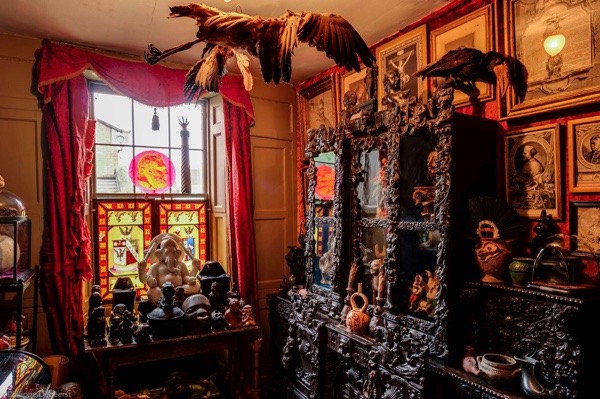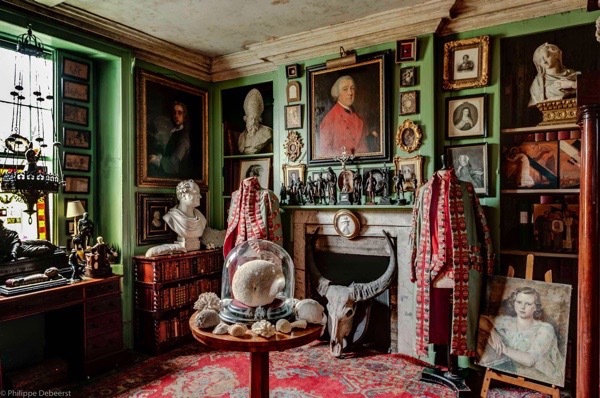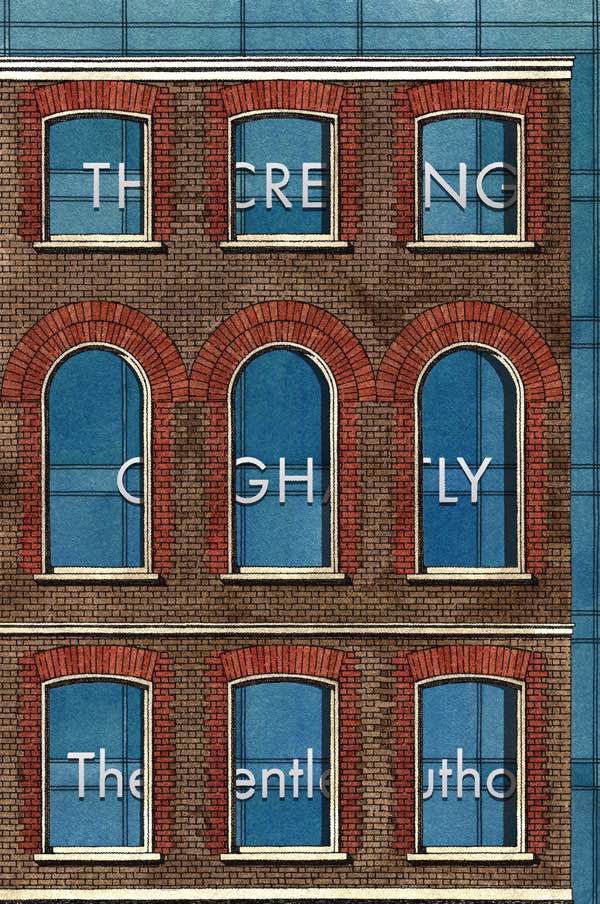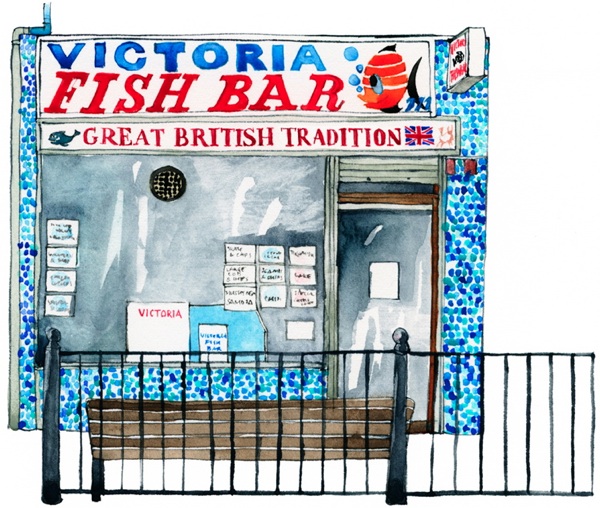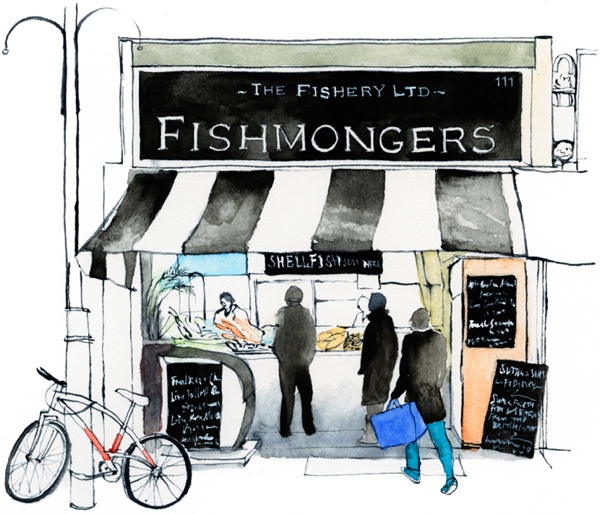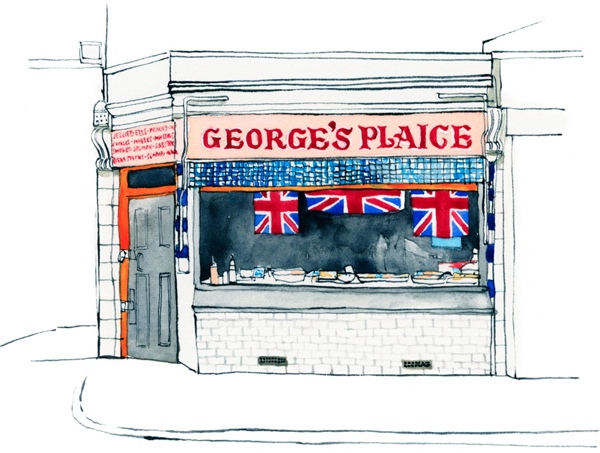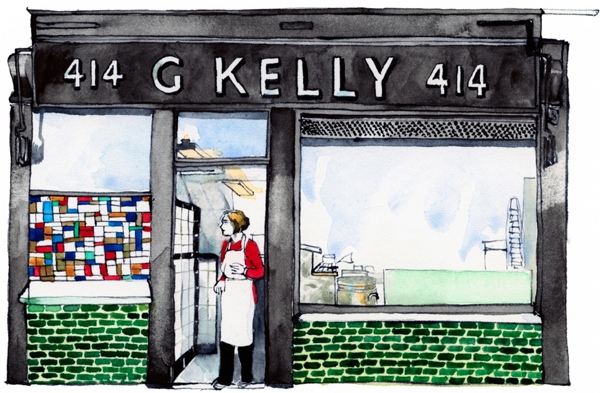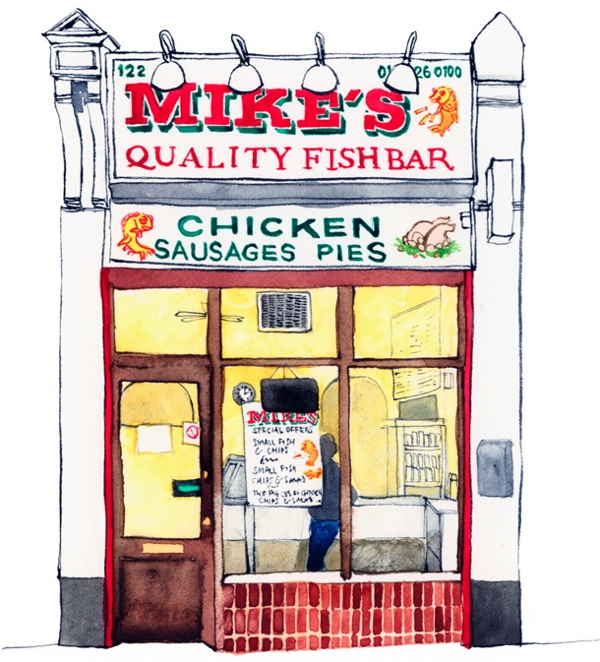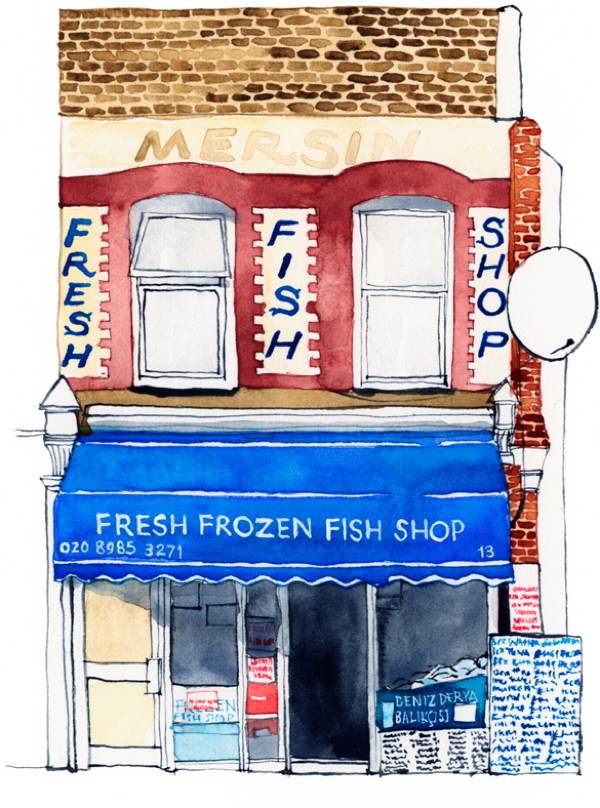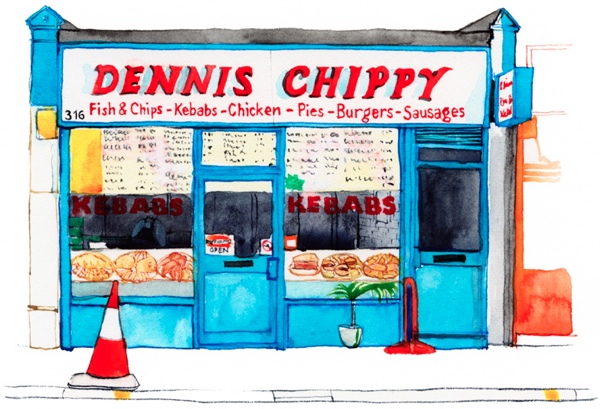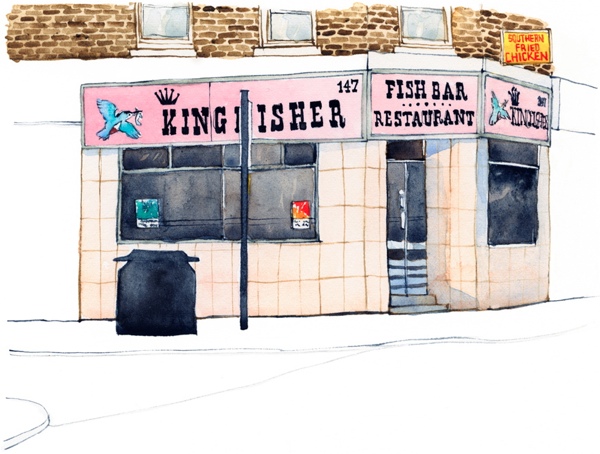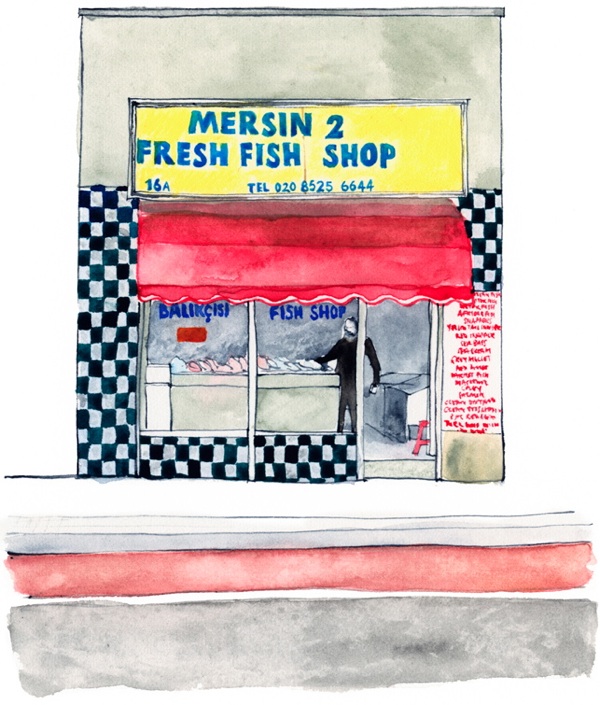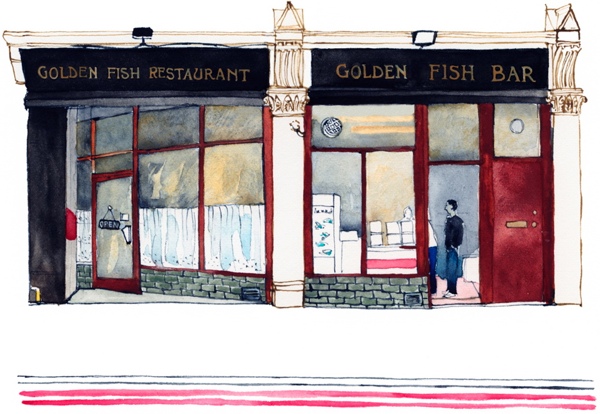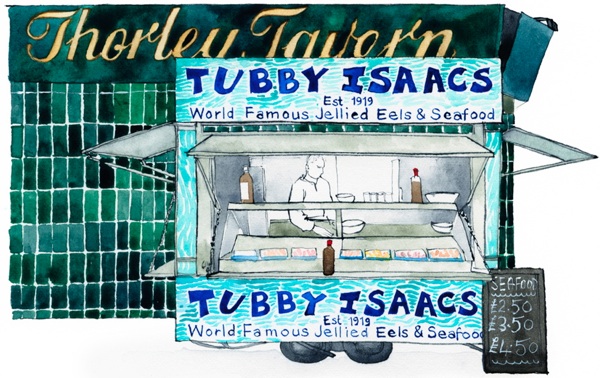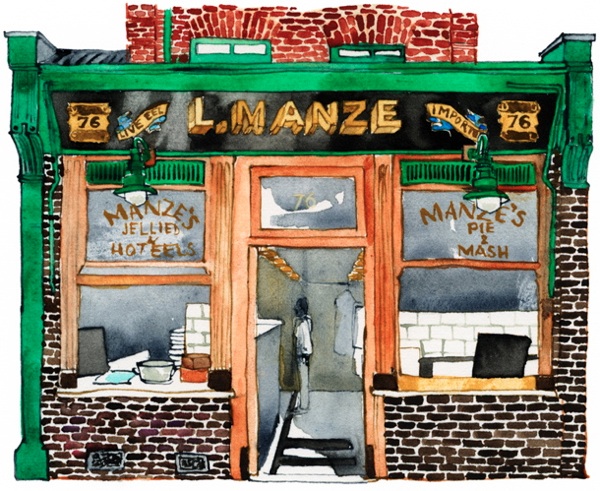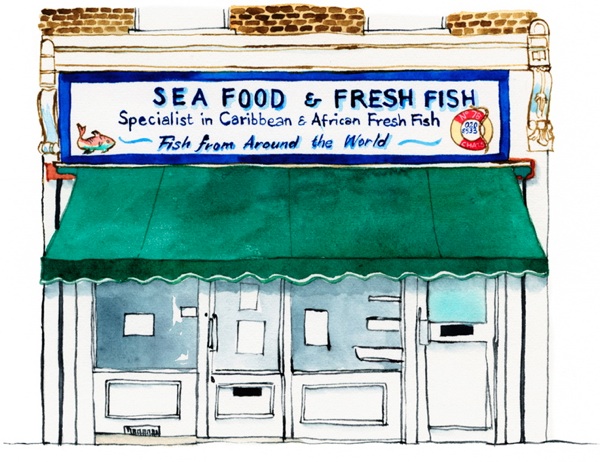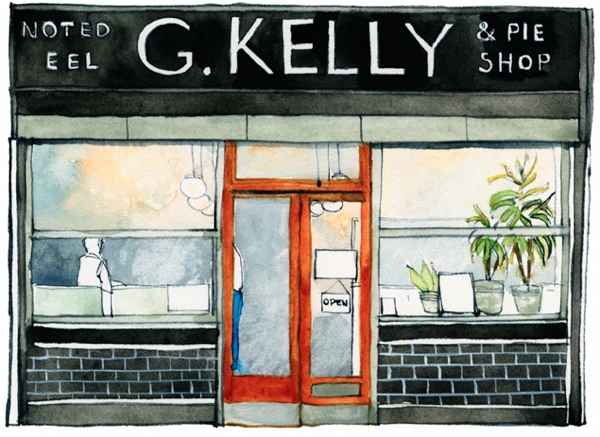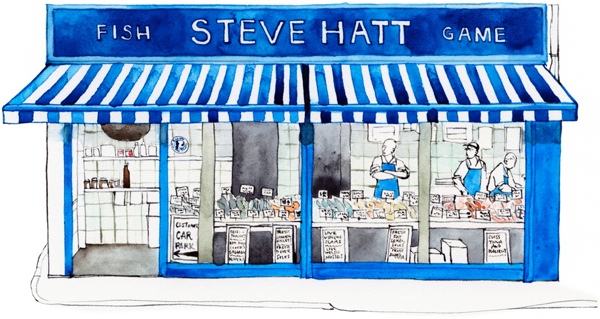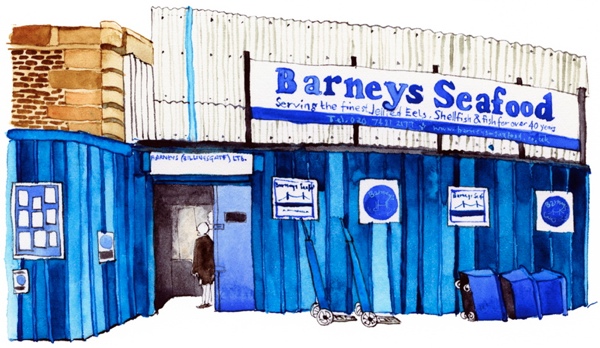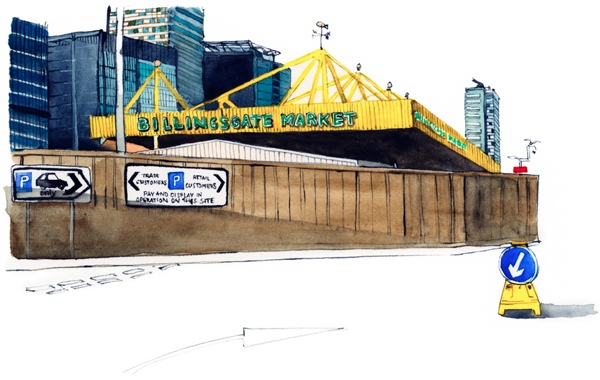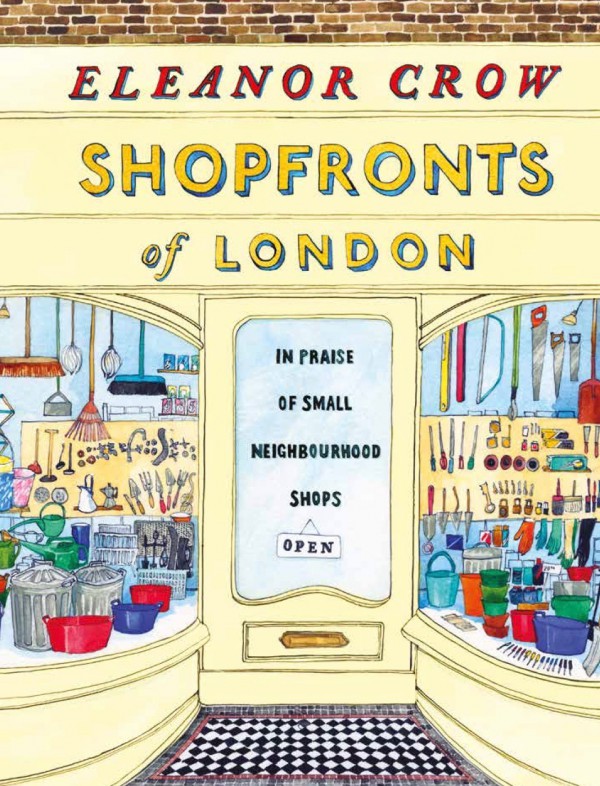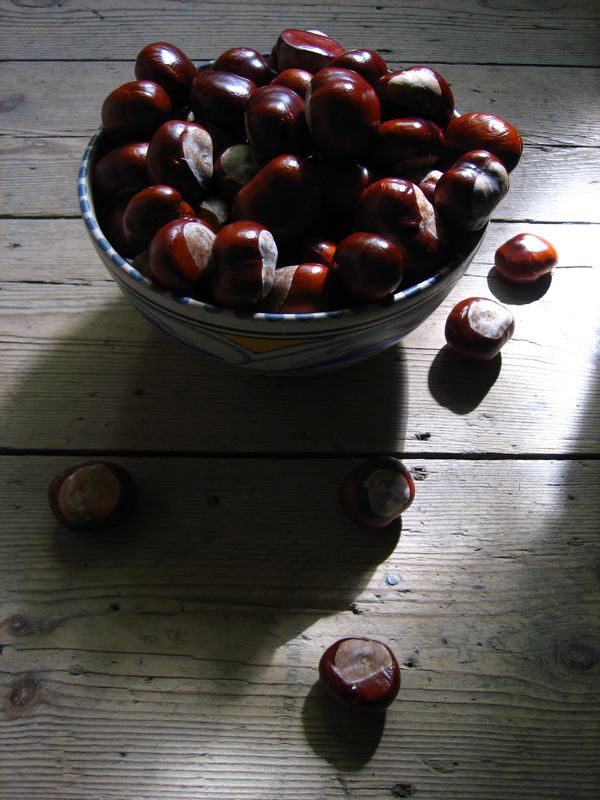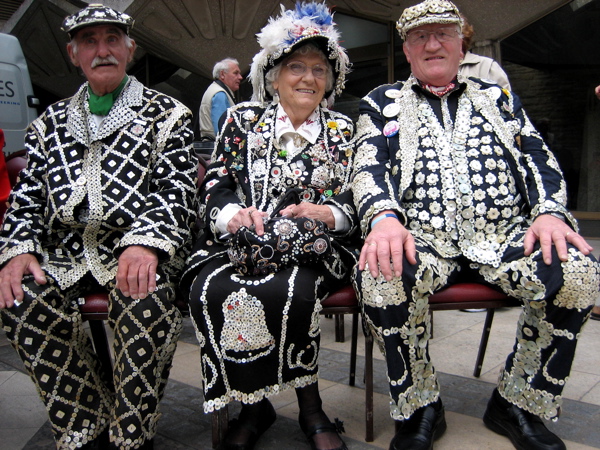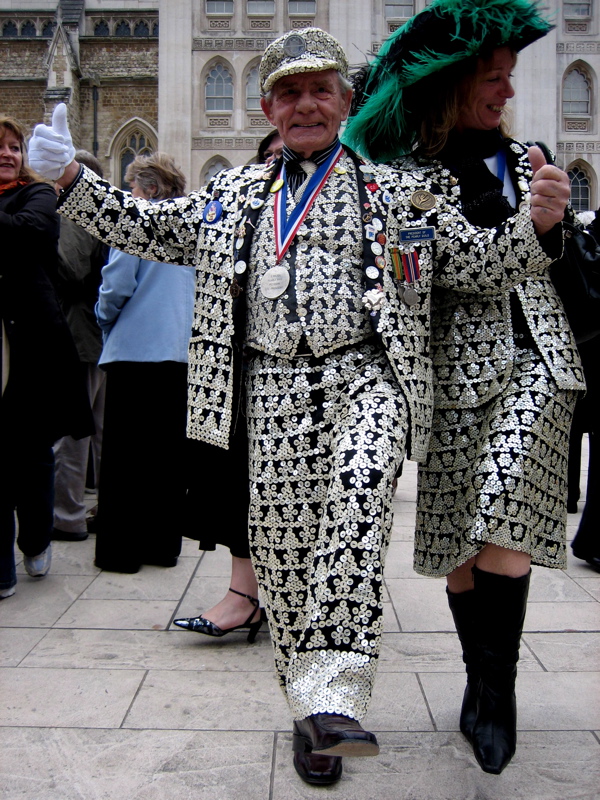Taking a cue from Spitalfields’ textile history, Townhouse in Fournier St has brought together three contemporary makers for this year’s Shoreditch Design Triangle who each take inspiration from cloth, weaving and pattern, under the umbrella Patch, Pot & Print.
Mary Norden stitches fine collages with antique fabric from diverse sources, Katrin Moye makes ceramics with motifs from Huguenot design, while Janet Tristram & Cameron Short of Bonfield Block Printers design pieces of clothing including traditional prints. The prints below are from a Somerset Song Coat lined with images from folk songs collected by Cecil Sharp, which suit this harvest season ideally. At Townhouse, they will be presented a Spitalfields Coat.
All are welcome at the opening tonight from 6:30pm and the exhibition runs daily until 29th September.

Young Johnny-a-Selling
From the song, ‘Green Broom.’ It tells of a poor boy called Johnny – son of a needle furze-cutter – who is ordered ‘away to the woods for green broom.’ Having cut enough broom to sell, young Johnny goes to market where he is spotted by a ‘fair lady’ in ‘her window so high.’ She is love-struck and sends her maid to fetch him. As Johnny enters the lady’s room, she implores: ‘Will you marry a lady in bloom, in bloom?’ to which he consents.

The Seeds of Love
Whilst visiting clergyman Charles Marson of Hambridge, Somerset, Cecil Sharp overheard the gardener, John England, singing this song as he toiled. Captivated by the lyrics and melody, he noted it down – the date was 22nd August 1903 and Sharp’s song-hunting quest grew from it.

Like a Dove
From the song ‘Sovay, Sovay’ in which a wily young woman disguises herself as a highwayman, holds up her betrothed with a flintlock and – to establish his good faith – asks him to hand over his ring.

I Had Not the Liberty (the Seeds of Love)
The song is written from an unmarried woman’s point of view. In it, she reflects on a series of missed romantic opportunities – represented by the violet, the lily and the pink. Despite the song’s melancholic tone, the woman strikes a defiant note at its end – ‘For the grass that have been oftentimes trampled underfoot, give it time it will rise up again.’

John Barleycorn
This image is from the ancient folk song of the same name. In it, Barleycorn is a personification of the beer and whiskey crop, barley. The song tells a grisly tale of the indignities, attacks and eventual death he suffers, mirroring the various stages of barley cultivation. In this print, John Barleycorn is portrayed as a pagan totem – a kind of ‘Beowa’ an Anglo Saxon figure associated with barley and agriculture.

Hare & Greyhound
From ‘The Two Magicians’, a song that Cecil Sharp heard it from just one source – a blacksmith with the apt name of William Sparks. It tells the tale of a girl who refuses to marry a ‘husky, dusky, musty, fusky, coal blacksmith…’ The song takes a surreal turn as the girl resorts to shape-shifting to escape his advances. Little does she know that he, too, has the power to transform himself.

Wraggle Taggle Gypsies
It tells the story of a wealthy, landed lady who eschews her ‘privileged’ life to run off with a band of Romanies – by doing so, she frees herself.

Queen of May
From the melodious and haunting song, ‘As I walked through the Meadows’. It tells the tale of a boy who comes across a country maid – ‘so pretty, so dapper and pert’ – wandering the spring fields. Although just a young, innocent girl, she is the embodiment of all that is natural, bountiful and good – a Ceres, a goddess to him. He crowns her ‘the sweet Queen of May’.

Eyes that Could Not See
From a lyric in the song, ‘Bruton Town’ – Shakespearean and fairytale in equal measure.

Crystal Spring
The lyrics of the first verse are particularly evocative, transporting the listener to a cool, verdant Arcadia – ‘Down by some crystal spring, where the nightingales sing, Most pleasant it is, in season, to hear the groves ring…’ The print’s symmetry is inspired by a seventeenth century carved Bible box.

False Young Man
This image is from the folk song, ‘The Sprig of Thyme’. It tells the story of a country girl who falls foul of her suitors and their false promises. The cautionary tale, heavy with botanical symbolism and plant lore, was passed from mother to daughter across generations.
Images copyright © Janet Tristram of Bonfield Block Printers












